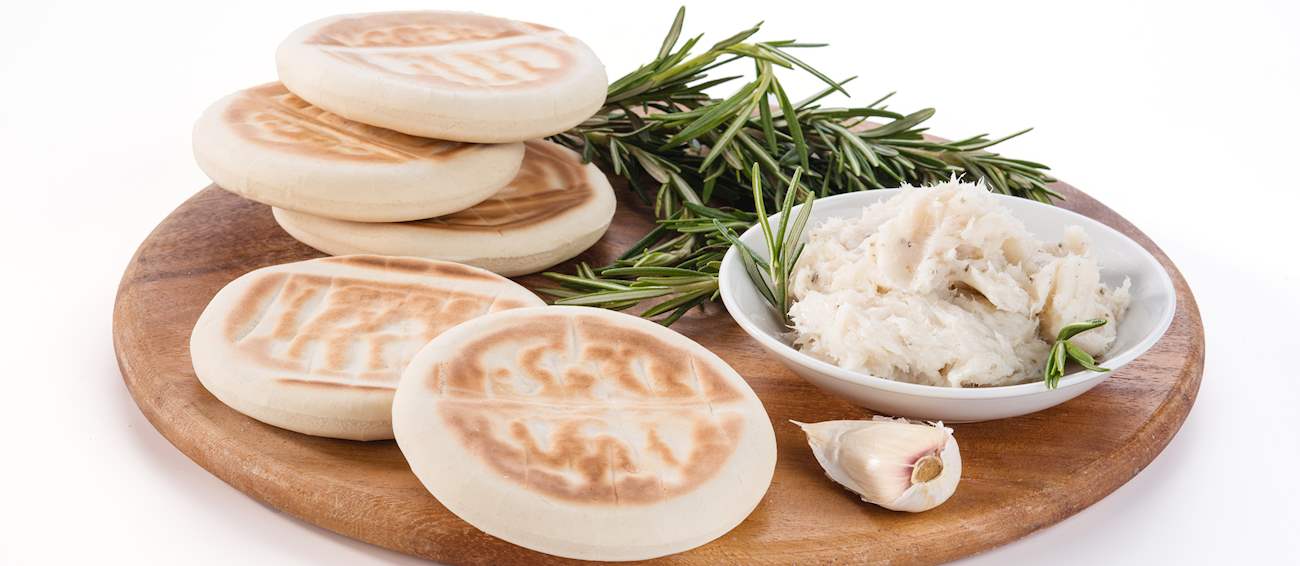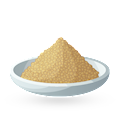Gnocco fritto is a traditional pastry consisting of flour, lard, salt, and a leavening agent. The dough is traditionally shaped into little rectangles by flattening it with the palm of one's hand. Often times, people make small holes in the middle of the dough with their fingers, and fry the dough on lard in a pan.
Gnocco fritto is traditionally served warm and paired with cheese or cured, sliced meats. In the past, it was very popular with farmers who consumed it during the days of hard labor in the fields.
MOST ICONIC Gnocco fritto
View moreMAIN INGREDIENTS
Crescentina modenese is a traditional, disk-shaped Italian bread that is crispy on the exterior and soft on the interior. It is traditionally baked in special stones called tigelle (the reason why the flatbread is sometimes called like that), and usually slathered with a spread made from lardo, rosemary, garlic, and Parmigiano-Reggiano cheese.
The stones often have a decorative symbol on both sides, which is embossed on the dough as it bakes. It is believed that crescentina modenese was invented by the poor people from the Apennine Mountains near Modena, where farming families would gather around the hearth to bake their evening bread.
Passatelli in brodo is a specialty dish of the Emilia-Romagna region in Italy, consisting of a meat broth filled with dumplings made from cheese, bread, and eggs. This hearty soup belongs to the cucina povera (cuisine of the poor), when people used to invent new dishes with what little ingredients they had at the time.
It is recommended to pair the soup with a simple red wine such as Sangiovese.
Despite its name, zuppa Inglese (lit. English soup) is an original Italian layered dessert consisting of pastry cream and sponge cake that is soaked in Alchemers liqueur. The dessert was first made in the 16th century for Dukes of Este, who resided in Ferrara.
According to a popular theory, it was invented by the court chefs when a diplomat from Ferrara wanted a trifle, a traditional British dessert, upon his return from a trip to England. Since the court chefs didn't have all the necessary ingredients, they made their own version, using sponge cake, pastry cream, and Alchermes herb liqueur for color.
One of the most popular Italian pasta types are tortellini; an intricate creation made with a variety of ingredients securely wrapped inside a layer of egg pasta, creating a pocket which is then folded in a ring shape. They are commonly referred as navels, originating from the famous legend which claims that a chef created it after he saw the goddess Venus, and modeled it on the look of her belly button.
The first written record of tortellini goes back to the 17th century, although it is probable that they were created earlier than that. It is believed that they originate from the Emilia-Romagna area, specifically cities Modena and Bologna. Unlike other pasta varieties, tortellini were considered a luxurious food, usually served during important holidays or festivities.
VARIATIONS OF Tortellini
MAIN INGREDIENTS
One of the most typical pasta dishes from Bologna is called tortellini in brodo, referring to tiny parcels of meat-filled pasta served in a golden capon broth, sometimes with the addition of grated Parmigiano Reggiano cheese. The official recipe requires the dough to be made from eggs and flour, and the filling to be made from pork loin, prosciutto, mortadella, Parmigiano Reggiano, eggs, and nutmeg.
Cooking in a broth additionally boosts the flavor of this ultimate comfort food, which, due to the time-consuming preparation process used to be a dish reserved for festive occasions such as Christmas. Today, freshly made tortellini are a standard part of the gastronomic offer of Bologna, and the locals prefer to enjoy those extraordinary flavors in a simple bowl of soup rather than veiling it in heavy, creamy sauces.






